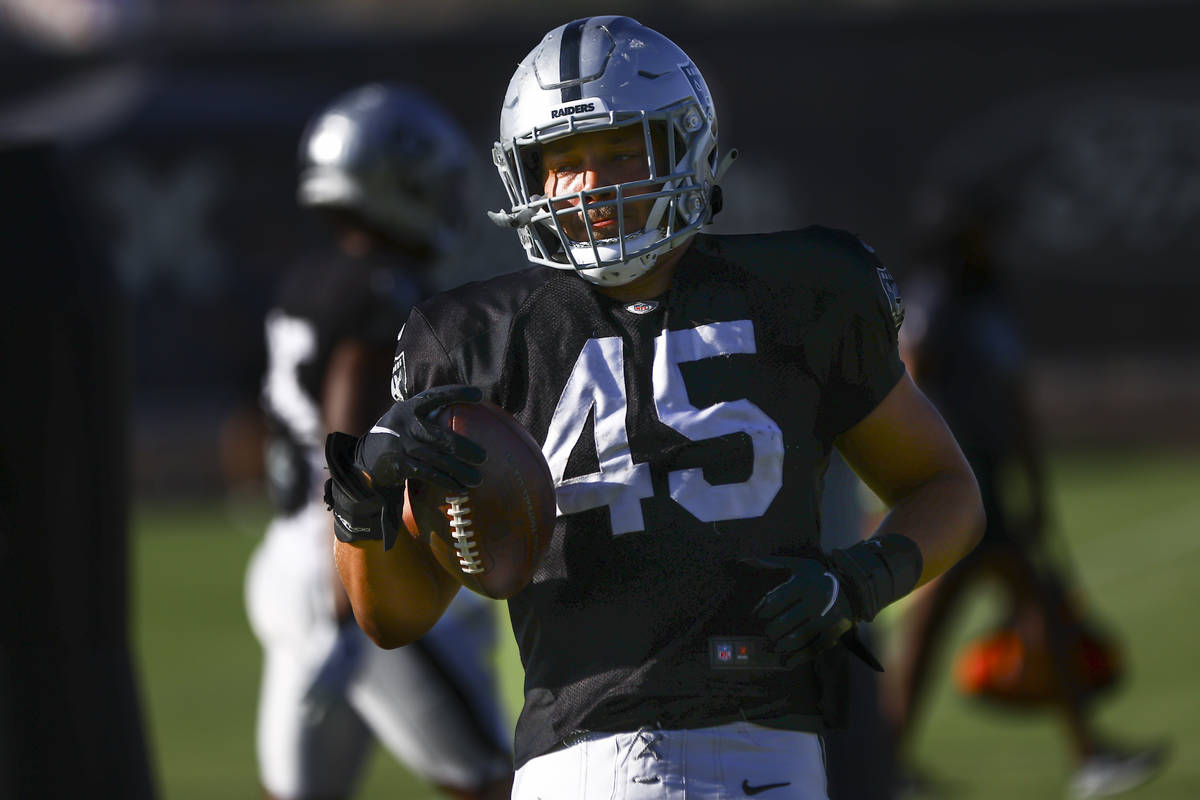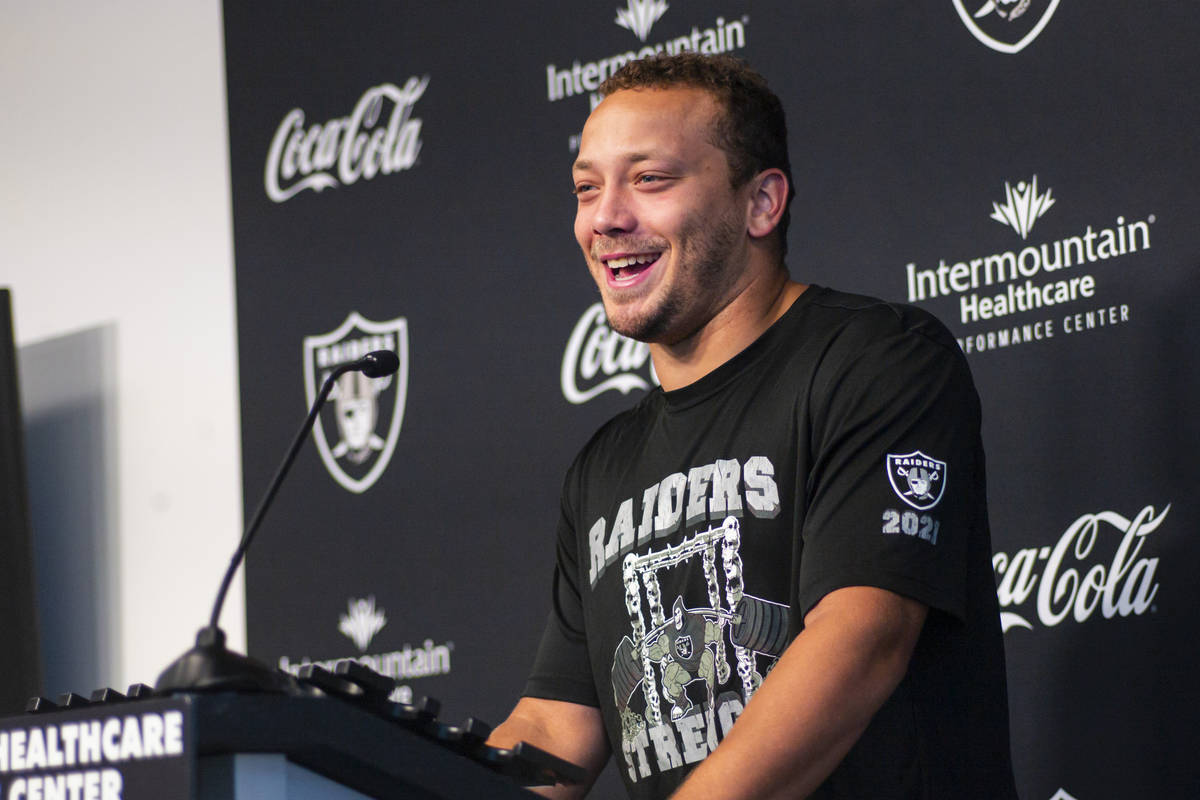Graney: Ingold proving fullback position isn’t dead yet
You’ve heard it for years, read it over and over, perhaps even said it a few times: The fullback is a dying breed in football.
Why, then, is Alec Ingold so incredibly important to the Raiders?
Positions have evolved and it’s no different for the most overlooked of all. Erase from your mind a solo image of lead blocks at the point of attack by those with blood-stained jerseys while plodding through the hideous conditions of a frozen tundra.
O.K. Keep the part about the blood.
“You’re not going to have a lot of stories written about you as a fullback,” Ingold said. “My role is to make a 4-yard run into 6 yards, a 3-yard catch into 5 and give (quarterback) Derek Carr a half-second longer. It’s not glamorous. Not a lot of people want to do it.”
I’m not sure how much impact a player like Lorenzo Neal — the greatest of blocking fullbacks who played between 1993-2008 — would have in today’s NFL. Eras are unique.
Fullbacks are asked to do more now than obliterate linebackers while securing the edge. That still helps. It just can’t all be about knocking skulls.
Valued position
Ingold is one of 23 fullbacks currently listed on NFL rosters, meaning Jon Gruden isn’t the only head coach to value the position. Few, however, favor it more than the Raiders’ boss.
The toughness part still exists. Ingold fractured two ribs in Week 9 against the Chargers last season. Couldn’t sleep. Couldn’t really breathe. He sneezed during a walk-through practice, scared the autumn wind out of everyone by crumbling to the turf in a 6-foot-1 heap of excruciating pain, got up and played against the Broncos. Didn’t miss a game.
There’s more to a fullback in 2021 than having to hear signals and identify fronts and knowing which gap to lead a running back, all the while setting up in a backfield with a hand in the ground.
These aren’t no-neck brutes of the past. Fullbacks of today need to move for their money, even while being some of the league’s lowest paid players. We’re talking about blocking safeties 20 yards downfield. That’s moving.
In this way, Ingold — who scored the team’s first touchdown at Allegiant Stadium with a 3-yard reception — isn’t limited by how others perceive his skill set.
When working out with teammates, the undrafted player from 2019 runs go routes and slant routes and dig routes. He’s a high school quarterback turned college linebacker, turned college and pro fullback. There was a time when he thought the road to an NFL roster was him slinging the ball around from the pocket.
“I just wasn’t 6-4,” Ingold said.
Teams now often draft bigger running backs and make them into fullbacks. Or assign a tight end many of the position’s responsibilities. Ingold made the switch to fullback as a sophomore at Wisconsin. His experience at other positions certainly didn’t hurt.
Just looks different
“Fullback is probably the most thankless job in all of sports,” Carr said. “They wear neck braces for a reason — some of those collisions are just different. My sons won’t be playing fullback.
“The way we run power and counters, it’s one-on-one in the hole and if you don’t win, we don’t win. More times than not, Alec wins. But he also has that speed. He can go play running back. He goes and plays tight end some days. I mean, we saw him (at 240 pounds) jump over a cornerback last season. His value doesn’t really get talked about because he’s a fullback.”
I’ll give you this: If a dying breed means a relatively rare type of person, fine. The fullback fits.
But it shouldn’t be mistaken for an NFL position that is no longer appreciated.
It just looks different now, is all.
The Raiders are glad for it. And for Ingold.
Ed Graney is a Sigma Delta Chi Award winner for sports column writing and can be reached at egraney@reviewjournal.com or 702-383-4618. He can be heard on “The Press Box,” ESPN Radio 100.9 FM and 1100 AM, from 7 a.m. to 10 a.m. Monday through Friday. Follow @edgraney on Twitter.
























